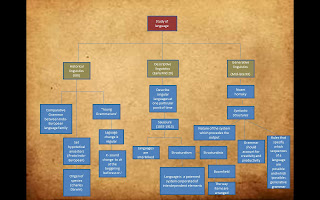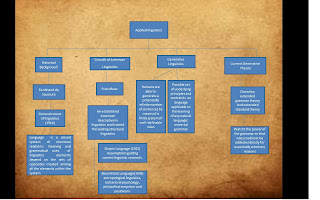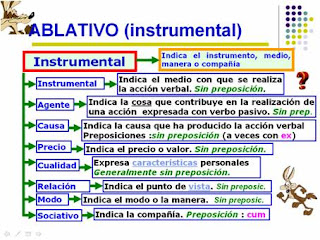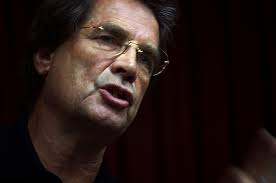Para Halliday la
adquisición de una lengua consiste en el dominio progresivo del potencial funcional, que se incrementa hasta una tercera etapa, en el cual se registran ya funciones características del lenguaje adulto.
Esta teoría se basa en que el significado es un factor determinante de los inicios del lenguaje infantil, en que los procesos interactivos son quienes explican este lenguaje. El significado y el proceso netamente interactivo constituyen los dos pilares en que se sustenta esta teoría, por lo que Halliday concluye que las condiciones en que aprendemos la lengua, en gran medida están determinados culturalmente. Se conoce como parte de la psicología social.
El
aprendizaje de la lengua consiste en el dominio progresivo de las macrofunciones o funciones básicas señaladas y la formación de un potencial semántico con respecto a cada uno de tales componentes funcionales. Propone siete alternativas básicas en la etapa inicial del desarrollo lingüístico de un niño normal:
- Instrumental: "yo quiero", para la satisfacción de necesidades materiales.
- Regulatoria: "haz como te digo", para controlar el comportamiento de otros.
- Interaccional: "tu y yo", para familiarizarse con otras personas.
- Personal: "aquí estoy yo", para identificarse y expresarse a sí mismo.
- Heurística: "dime por qué", para explorar el mundo circundante y el interno.
- Imaginativa: "vamos a a suponer", para crear un mundo propio.
- Informática: "tengo algo que decirte", para comunicar nueva información.
Lo realmente importante no es que el niño haya adquirido esta o aquella función sino que haya internalizado el hecho de que el lenguaje sirve para esos propósitos, que sepa que es bueno hablar.
Halliday considera que el proceso de adquisición de una lengua, el individuo cumple tres fases:
- Primera Fase: (1 a 15 meses): Domina las funciones básicas extra-lingüísticas. Funciones que corresponden con usos de la lengua simple, no integrados y necesarios para la transición al sistema adulto, por considerarse universales culturales. Las funciones en esta fase son discretas y su aparición ocurre rigurosamente en el orden señalado. Desarrolla una estructura articulada en expresión y contenido. Los sonidos producidos no coinciden y los significados no son identificables.
- Segunda Fase: (16 – 22 meses): Transición del lenguaje del niño al primer lenguaje del adulto. Se divide en dos etapas:
- La Macética o de "aprender": conjunción de las funciones personal y heurística, que se refiere al proceso de categorización y conocimiento del entorno.
- La pragmática o de "hacer": en la que se conjugan la instrumental y la reguladora. El niño por medio del lenguaje satisface las necesidades básicas de comunicación y le sirve para conectarse con el medio ambiente. Significa el primer paso hacia el uso "informativo" de lengua. El diálogo, factor de importancia capital para la teoría de Halliday, implica formas puramente lingüísticas de interacción social y al mismo tiempo ejemplifica el principio general por el que las personas adoptan papeles, los asignan o rechazan los que se asignan.
- Tercera Fase (22 meses en adelante):El niño entra en una fase que supone la adecuación del lenguaje infantil a la lengua del adulto. Ya no se dará una correspondencia unívoca entre función y uso, se caracteriza por una pluralidad funcional. Aparecen tres nuevas funciones:
- Ideativa: para expresar contenidos, producto de la experiencia del hablante y su visión del mundo real (utilización del lenguaje para aprender).
- Interpersonal: opera para establecer y mantener las relaciones sociales.
- Textura: es el mensaje lingüístico en sí mismo. Proporciona al hablante la posibilidad de utilizar adecuadamente los potenciales de significado y de organizarlos de modo coherente. Domina un sistema multi-funcional, ya que sabe como asignar los significados.
La propuesta teórica de Michael Halliday, implicó el cuestionamiento de las propuestas de dos grandes lingüístas: Ferdinand de Saussure y William Lavob, puesto que ninguna de las dos permitía un estudio acabado del binarismo "lengua"/"habla": o era la opción sistémica (lengua) o la opción funcional (habla). Halliday plantea la discusión al respecto en el libro "El lenguaje como semiótica social" (1979), donde profundiza respecto a un nuevo modelo para el estudio del lenguaje integrando el componente sociocultural como clave en su comprensión.
Conceptos
Neurolinguistica: se conoce como neurolingüística
a la disciplina que analiza los métodos del cerebro humano para lograr la comprensión, la generación y la identificación del lenguaje, tanto hablado como escrito.
Estilistica:estudio del estilo o de la expresión lingüística en general.
Sociolinguística: la sociolingüística estudia el lenguaje en relación con la sociedad. Su objetivo de análisis es la influencia que tienen en una lengua los factores derivados de las diversas situaciones de uso, tales como la edad, el sexo, el origen étnico, la clase social o el tipo de educación recibida por los interlocutores, la relación que hay entre ellos o el tiempo y lugar en que se produce la comunicación lingüística.
Psicolinguistica: La psicolingüística o psicología del lenguaje, es una disciplima dentro de la psicología interesada en el estudio de los factores psicológicos y neurológicos que capacitan a los humanos para la adquisición, uso y comprensión del lenguaje.
Fuentes
http://www.monografias.com/trabajos16/desarrollo-del-lenguaje/desarrollo-del-lenguaje.shtml
http://definicion.de/neurolinguistica/
http://cvc.cervantes.es/ensenanza/biblioteca_ele/diccio_ele/diccionario/sociolinguistica.htm
http://enciclopedia.us.es/index.php/Psicoling%C3%BC%C3%ADstica
Actividad
http://www.proprofs.com/games/word-games/hangman/halliday-teora-y-propuesta-1/






















